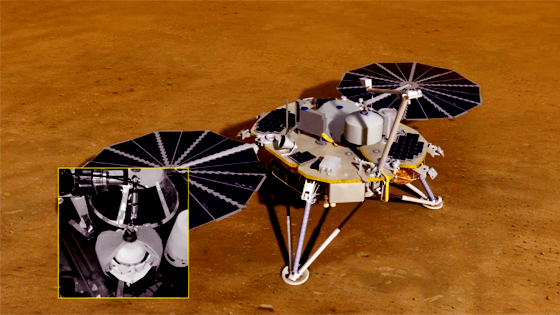Video: NASA sending another ROBOT TO MARS. Yeah, get that Red Planet goodness.
Complimenting my philosophy of “more shit to Mars, all the time!“, NASA has announced they’re sending another robot to the Red Planet in 2016. Obviously carrying the hidden DNA capsules that will begin vat-growing the first spacemen to secretly colonize the planet. Doi. Google it, you ignoramuses.
This video, courtesy of NASA, sheds some light on the InSight spacecraft’s proposed design and scientific suite, which the Agency says will carry four instruments:
SEIS: To capture Mars’ pulse, or its internal activity, InSight will carry a seismometer called SEIS to the surface of the Red Planet. SEIS will take precise measurements of quakes and other internal activity on Mars to better understand the planet’s history and structure.
HP3: To take Mars’ temperature, a key indicator of planetary evolution, InSight will deploy a heat flow probe on the surface of Mars. The instrument, known as HP3, will hammer five meters into the Martian subsurface, deeper than all previous arms, scoops, drills and probes, to learn how much heat is coming from Mars’ interior and reveal the planet’s thermal history.
RISE: To track Mars’ reflexes, or the way it wobbles when it is pulled by the sun, an investigation called RISE will precisely measure the Doppler shift and ranging of radio communications sent between the InSight lander and Earth. By tracking wobble, scientists can determine the distribution of the Red Planet’s internal structures and better understand how the planet is built.
Cameras: Insight will incorporate a camera, similar to the “Navcam” engineering cameras onboard the Mars Exploration Rovers (MER), mounted on the arm of the lander that will serve to capture black and white images of the instruments on the lander’s deck and a 3-D view of the ground where the seismometer and heat flow probe will be placed. It will then be used to help engineers and scientists guide the deployment of the instruments to the ground. With a 45-degree field of view, the camera will also provide a panoramic view of the terrain surrounding the landing site.




